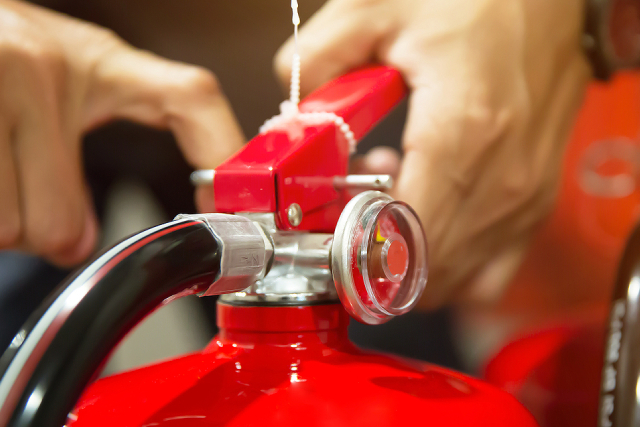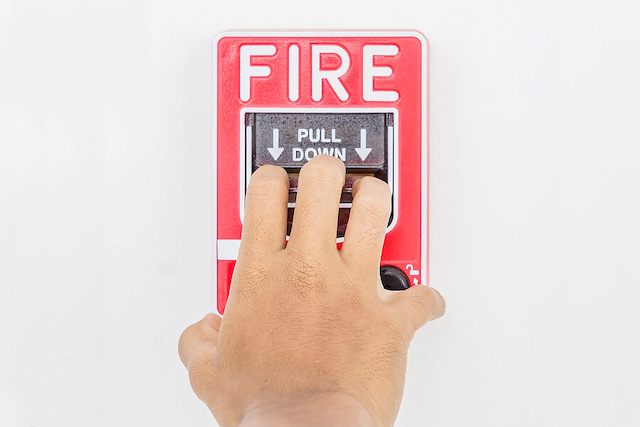Whenever a fire outbreak occurs, fire extinguishers are the first line of defence that those first on the scene can use to combat the spread of fire, provided they are used correctly. Despite its straightforward handling, people make several mistakes when using these fire suppression tools. As such, fire safety managers must teach the safe, proper, and effective use of fire extinguishers to the parties under their jurisdiction. Below are some common yet critical mistakes to look out for and address during fire safety training drills.
1. Failure to extract the extinguisher pin
The pin on a fire extinguisher, located on the handle, is necessary to prevent unintended discharge and wastage of its contents. When it is time to put a fire extinguisher to use, take care to instruct drill participants to first pull out the pin and emphasise the importance of this first step. In accordance with many jurisdictions, these pins are also typically protected by tamper seals that prevent them from being accidentally pulled and serve as a way to identify if a fire extinguisher has already been discharged. A simple twist and pull on the pin should suffice to remove both the tamper seal and fire extinguisher pin.
2. Aiming the discharge too high
When aiming a fire extinguisher at the fire, people often make the mistake of directing the discharge at its top point and sweeping it downwards. This method is highly ineffective and will only waste the fire extinguisher while the fire continues to spread. Instead, instruct participants to aim at the base of the fire where the fuel keeping it alive is likely located. During fire drills, show the proper sweeping motion along the base and how quickly it can put the fire out.
3. Standing way too close to the fire
Maintaining a proper distance between the fire and the fire extinguisher is one of the most critical things to instruct drill participants should they ever have to respond to a fire. If they are too far, the fire extinguisher’s discharge may be too weak to put out the fire. Conversely, being too close could lead to getting burned and potentially helping the fire spread. According to the Federal Emergency Management Agency, the recommended distance to observe is approximately 8 feet from the flames. The fire extinguisher can output the right amount of discharge power at this distance while avoiding excessive dispersion of the extinguishing agent.
4. Leaving a freshly extinguished fire
After putting a fire out, it is important not to leave the scene immediately, if possible. This is because fires can easily start again from even the smallest sparks and may not be completely extinguished as initially thought. Take time to monitor the area, search for signs that may cause the fire to reignite, and only leave after confirming all is safe.
Conclusion
Fire extinguishers are incredibly important tools for fighting fires, but they can be rendered useless and even dangerous in the hands of those untrained to use them properly. As such, it is critical that fire safety managers fully cover the basics of their usage and correct any mistakes whenever there is an opportunity for a hands-on demonstration.
Learn more about proper fire safety training procedures today with the help of TenLearn! As an online e-Learning platform offering SCDF-approved fire safety courses in Singapore, we strive to be an indispensable partner towards your continuous improvement as a competitive and highly skilled fire safety manager. Complete our courses and maintain your FSM certification in Singapore while keeping up with the latest in all things fire safety.


Write a public review